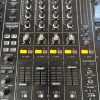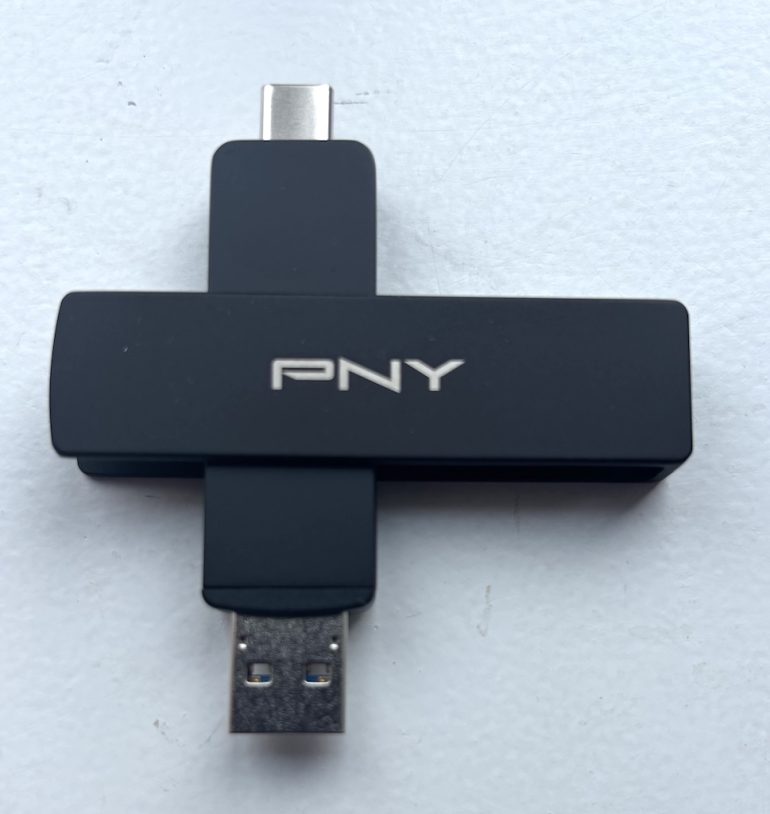The Pioneer DJM-A9 Mixer was launched in March 2023. When Alpha-Theta release a new mixer, the DJ world takes notice. The DJM-A9 wasn’t just an incremental update to the DJM-900NXS2. This was a brand new industry-standard club mixer aimed squarely at the top end of the market.
It’s now 2 years since release and we have been increasingly coming across the A9 in clubs at our gigs as it replaces the 900 NXS2, so we wanted to run it through it’s paces again with the befit of hindsight and learned experience. Does it warrant you upgrading? DJWORX takes a second look at this top end mixer now that it is well established on the club and festival circuit, and second hand units are becoming available.
Pioneer DJM-A9 Pricing
UK £2,469. US – $2,699
The A9 is not the most expensive mixer in the current Alpha Theta mixer range. The VM-10’s several hundred pounds more, and the Euphonia rotary mixer is another step up again.
Pioneer DJM-A9 Review
Design and Build Quality
At the top end Alpha-Theta (Pioneer DJ) have always got the balance between durability and design right, with their mixers withstanding incredible abuse to perform admirably in clubs for years on end. The A9 continues that trend. It’s built like a tank (but a stylish one) with the chassis constructed from aircraft-grade aluminium just incase you need to take this thing to space (@Grimes?). However beyond just making the A9 look and feel premium, the build helps minimise electrical interference, keeping the audio signal clean even in a club environment. (It also makes it heavy, very very heavy)
Layout-wise, it’s got that classic intuitive, familiar Pioneer DNA with the EQ knobs, faders, and crossfader where you would expect them to be, meaning you won’t be hunting for controls however dark the rave you are playing at is. The clear labelling and tactile feedback of the knobs and sliders are all premium in feel.
This is a big unit. The power cable is there to give a visual idea of size. It could eat 2 FLX-4’s for breakfast. The A9 is a little wider than the 900, so you are going to need to consider that if you already have a custom booth installation.

Where the A9 really shines is in the FX department (more on that in a sec), but the overall feel of the mixer is incredibly refined. Every fader, knob, and button feels premium and well-calibrated, making it an absolute joy to mix on. The pots in general offer a satisfying tactile response. We feel that the booth and master output would benefit from being physically bigger, but it’s a minor quibble. This thing is built for both club installs and serious performance setups.
A standout feature is the ultra-smooth, high-tension Magvel Gen 3 crossfader. It just feels right. Engineered with advanced friction-reducing materials, it’s a near-seamless glide, allowing us to pretend to be able to scratch like JFB. The crossfader’s curve settings are customisable, meaning we could easily switch them on fly, when we wanted to ruin our progressive house set by starting to scratch for example.
Under the hood
The Pioneer DJM-A9 packs some serious firepower. The custom-designed DSP (Digital Signal Processor) does the heavy lifting for audio routing, effects processing, and other performance functions. You’re getting 24-bit/96kHz A/D and D/A converters, ensuring crystal-clear sound with enough headroom to handle even the most reckless gain staging.
The internal circuitry has been fine-tuned to reduce latency and minimise signal loss—because nobody wants laggy audio in a live set. Plus, the dual-layer PCB layout helps keep crosstalk and interference to a minimum. In real terms this means a crisp and clean signal. We’ve had some interference issues in our live studio from time to time, they were notably absent with the A9.
Additionally, the A9 mixer has diagnostic tools built into the firmware. These allow advanced users or sound techs to monitor signal levels, temperature readings, and even individual circuit performance metrics in real time. This level of detail is particularly useful for troubleshooting issues on the fly, ensuring that your performance is never compromised by technical glitches.
We are keen advocates of future-proofed gear, so were pleased to find that the DSP allows for firmware upgrades, meaning you can expect ongoing performance tweaks for many years into the future (Currently at firmware version 1.05)
Pioneer DJM-A9 Mixer Features
The Pioneer DJM-A9 is a four-channel beast of a mixer, both in terms of size and features.
There are standard features you would expect from a mixer in this price bracket:
- 3-band EQ per channel – standard but accurate.
- Dedicated filter knobs – Because no DJ can resist a well-timed filter sweep, are satisfyingly large.
- Auxiliary sends – for external FX units or in-ear monitoring.
- Independent cue mix controls? Yep.
- Balanced XLR outputs? – Natch
- Dual High-speed USB for seamless DJ software integration – Of course.
Mic – For the MC’s among you there is a phantom powered input which means you can connect a condenser mic directly to the DJM-A9. As the Pioneer PR blurb says, this feature has never seen been before on a DJ mixer. And there are 3 new microphone effects (Echo, Pitch, Megaphone) with a dedicated reverb. Trust us you want to try these out. We are struggling to see the use of the megaphone effect in particular (maybe to announce a fire alarm or drinks promo?) but it’s great fun and very believable.

2x USB-C ports – Not essential, but offers a level of future proofing whatever direction the USB wars take.
Bluetooth – Having the ability to switch to Bluetooth to play music from a phone in an emergency is one of those features that will become standard in time. Bluetooth pairing was a doddle for us.
Screen – The screen is fantastic, particularly when we tested it in low light. No viewing problems here, and the X-Pad is vastly improved as a result.
Dual headphones – Each DJ can choose what their headphones play, which is great for B2B and DJ duos (@dick and dom – look them up) . One to watch out for – one of the inputs is at the front of the mixer and so inaccessible if you flush mount these in a booth. (This set up will also be a massive help for DJ tutors who need granular control)
Software – Whilst the A9 is aimed at club installations and therefore CDJs that use Rekordbox as their base software, the A9 works with Serato out of the box.
Booth EQ – As seen on the VM-10 there is a 2-band EQ for the DJ booth, which wasn’t that helpful for us in the DJWORX studio, but in a club environment might be a godsend. We always found the booth monitor way too bassy at the Music Factory in Leeds for example, which although better than too trebly, made mixing challenging, being able to reduce the bass would (probably) reduced some of our clangs.
Router – There isn’t an ethernet one. We suspect if this mixer was released now, ie 2025 then there would be one, and probably a USB hub as well, but at the time of launch in 2023 Pioneer didn’t include these.
Audio Quality
The same 32 bit audio as the VM-10 means the Pioneer DJM-A9 is a noticeable step up in sound quality over the 900 NSX2.
The A9 has ultra-low noise preamps that offer good dynamic range. It’s fair to say that Alpha Theta have come in for some stick over the years about their pre-amps. Like a lot of mixers it says that “the preamp design minimises distortion even at high gain levels” Vinyl DJs have been using products like the ART Pre2 to boost and refine the preamp on Pioneer products. However, you won’t need them with the A9. We tested vinyl with our trusty Technics 1210 MK2’s and Pioneer VM-50 speakers. We had cleaned the vinyl, but it was still over 30 years old. Quench – Dreams sounded especially vibrant, and the legendary breakdown really engaged the DJWORX studio team.
Another key aspect is the mixer’s built-in compression and limiting circuitry. These features help prevent clipping and signal degradation especially with complicated transitions. The compression parameters can be adjusted via the on-board controls, giving DJs granular control over dynamic range. Advanced users will appreciate the ability to fine-tune these settings for different musical styles and performance contexts.
The A9 also employs a dual-mono design for its main channels. This approach significantly reduces phase cancellation issues and improves the stereo imaging of your mixes. The internal clock system, synchronised with a high-precision crystal oscillator, ensures that all digital processing occurs without jitter.
Effects and FX Section
There are eight simultaneous effects, with everything from studio-grade reverbs and delays to wild modulation effects. The Mobius effect makes an appearance, which although not for everyone will be recognised by those who had previously used the DDJ-1000. There is also triplet filter and triplet roll – these are expert effects, you will need to practice with these before using them in a live setting, it’s very easier to clutter your mix with these.

The FX assignment is flexible, letting you apply effects per channel or globally across the mix. This means you can get experimental—using reverb tails on just your vocals while keeping the rest of the mix dry, for example. Plus, MIDI control support means you can integrate external controllers for even more creative possibilities.
This point it’s worth noting that there is a curious feature – Centre lock. When using the Colour FX each knob will stop turning when you reach the centre if the manual switch is on. It is there to prevent you going the opposite way and overdoing the parameter you are using. We were able to unlock it accidentally even with the switch on, and this definitely feels like the most breakable part fo the mixer. It takes up valuable real estate and we are struggling to see the necessity of this. It feels like a last minute gimmick addition, we are not fans.
The A9 moves to having individual button switches to assign effects. The old knob system was way too easy to assign effects on the wrong channel so these are very welcome.
Customisation
The A9 offers deep strong customisation options. Full MIDI mapping lets you assign nearly every control to external gear, and with firmware updates the A9 will be able to stay relevant for years to come.
It also supports custom user profiles, which is a game-changer for DJs switching between different setups or sharing the mixer in a club setting.
Whats the Antenna for?
The Pioneer DJM-A9 is also integrated with the Stagehand iPad app , for use with CDJ-3000s. It is designed for front of house staff (sound techs, lighting techs etc ) to literally be able to see as well as hear what’s going on with their mixer and any connected CDJ-3000s. This is particularly useful for IEM DJs who otherwise have to take one out to communicate with the FOH team.
Note – There is no way to turn this feature off. We’ve all been in clubs where the DJ has been redlining, or the sound too tinny so we can see the thought process. You can take the antenna off like we did, and you might want to do that anyway so it doesn’t get broken in transit, but we find this surprising. It means your entire output can be monitored. Not only that, the FOH team can actually alter your output – levels, effects and EQ as well as actually turning the decks off. And it is the antenna that is the route of this paranoia.

Pioneer DJM-A9 versus DJM-900NXS2
So, is this just a DJM-900NXS2 with a facelift? Not quite. While they share the familiar Pioneer layout, the A9 boasts better audio quality, upgraded FX , lower latency, and more flexible routing options. Combined ith strong attention to details—smoother faders, refined gain structure, and enhanced connectivity and it is a genuine step up.

Pioneer DJM-A9 Final Verdict
The Pioneer DJM-A9 is everything you’d want in a club-standard mixer: rock-solid build, pristine audio, deep FX, and the right blend of familiarity and innovation. It’s not a cheap piece of kit, but if you’re a serious DJ looking for a future-proof investment, this is about as good as it gets.
The preamps are very good indeed, ensuring a wide dynamic range with minimal distortion, even when we were redlining it (not that we’d recommend it, but hey, we know how DJs (snare) roll). Connectivity-wise, the A9 is as versatile as they come. Whether you’re using CDJs, turntables, external effects, or all of the above, it’s got you covered. In short, whether you’re an analog or digital leaning , the A9 will play nice with your setup.
If you’re looking for the best in the business, you’ve found it. With this level of investment we would advise to buy new where ever you can. The Pioneer DJM-A9 will likely have come from a club environment, so if you are going to buy second hand you need to test it very very carefully.




